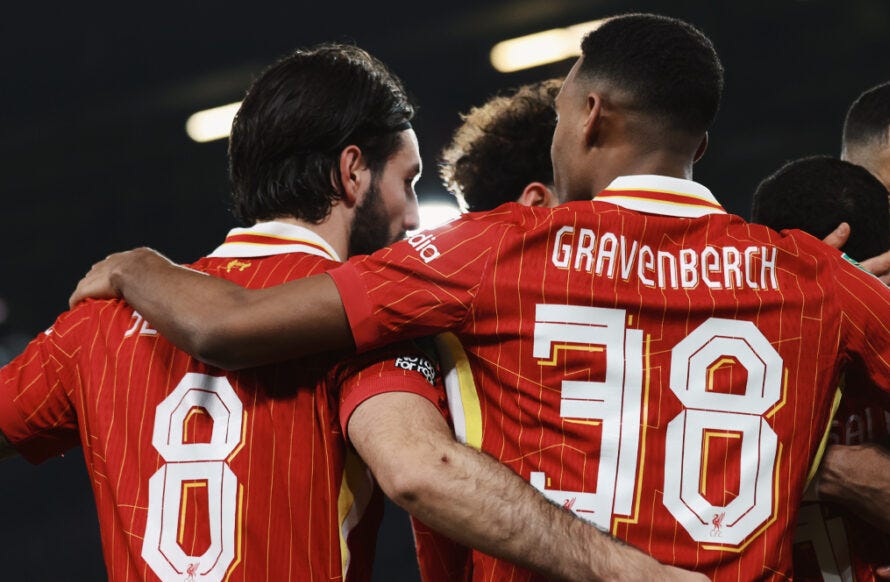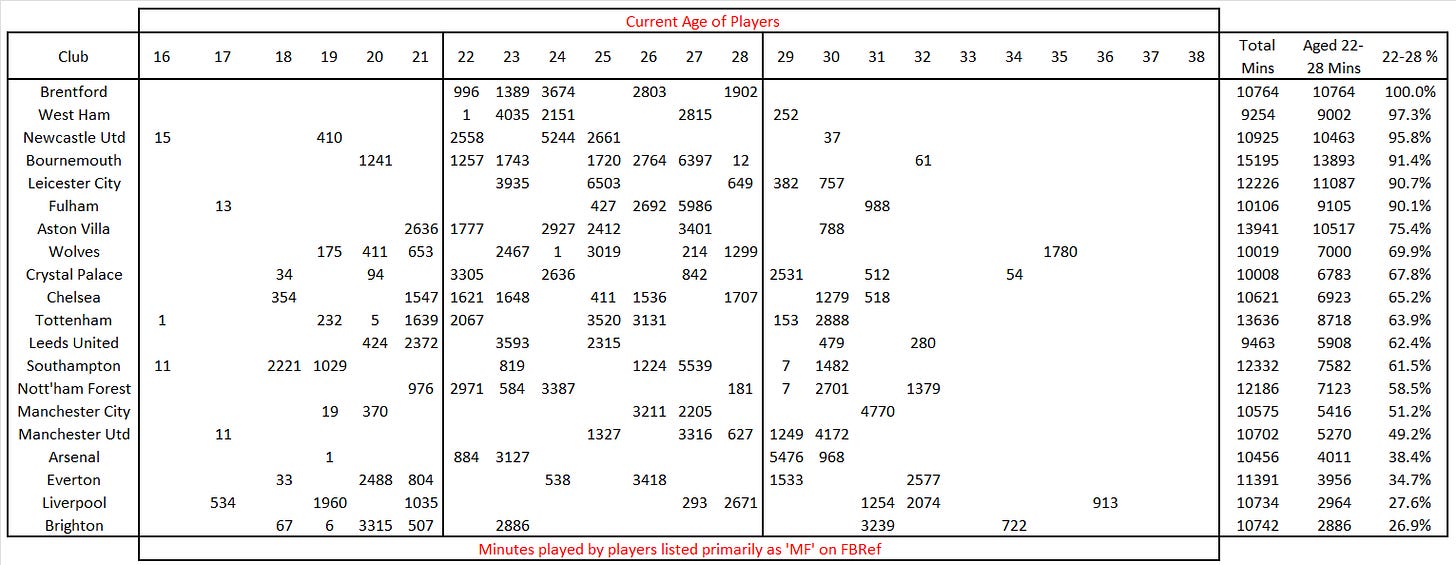Liverpool Have Got Their Balance Right
Just two seasons ago, the age profile of Liverpool's midfield was appalling. Sharp recruitment has seen a marked improvement.
A recent Sky Sports article contained some very interesting data on the age of defenders teams have used in the Premier League this season. The piece’s primary aim was to preview the key fixtures of match week 24.
As well as looking at Manchester City’s trip to Arsenal, a result few people would’ve predicted, there was a section on Bournemouth ahead of their clash with Liverpool. It highlighted the startling age profile of Andoni Iraola’s primary centre-backs, Dean Huijsen and Illia Zabarnyi.
Both are under 23, which is unusual for their position. The article reported that the Cherries had lost just one of 12 league games when the pair had started together, an impressive record for central defenders so young. The Reds went on to add another L to their shared results column, but the main interest from the Bournemouth section was the chart of centre-back minutes played by current age:
It immediately reminded me of a chart I made a couple of seasons back. At that time, the performance of Liverpool’s midfield was alarming, with opposing teams running through the side at will. If by any chance you weren’t following the Reds then, picture the City of this season to get an idea.
One of the major issues was that Jürgen Klopp couldn’t call on peak age midfielders in peak condition. Naby Keïta was fit enough to play just 293 league minutes in his age-27 season, at a time when the line of experience should cross over relative youth to generate a performance pinnacle.
Liverpool’s only other midfielder within the decade-wide window of being aged 21 to 31 was Fabinho. His issue was not one of fitness, it was of having played too much football. This indispensable chart from the end of 2021/22 helps illustrate the point.
With a tally just north of 37,000 career minutes in club football by the end of 2022/23, Fabinho was 29 years old. The reason he could no longer keep pace with opponents week after week was because that level of playing time is more in line with that of a 36-year-old. The Reds already had a James Milner at that age that season, they didn’t need another.
Looking into this led me to create the below midfield chart, similar to the one from Sky. It is harder to categorise players with the same positional certainty here though. A team might play two, three or even four centre-backs (if their manager is a tactical visionary like Tony Pulis or Pep Guardiola). The concept of a midfielder is far vaguer. To qualify for this chart, players had to have ‘MF’ listed first in the position column on FBRef.
The Premier League teams from 2022/23 are sorted by the proportion of their midfield minutes played by men who were between 22 and 28 at the start of the season. While that range was chosen at the time to illustrate the age gulf at Liverpool, it seems a reasonable frame for the years when a player is approaching their peak. You will find the Reds second bottom of the standings.
With Klopp and Jörg Schmadtke running things, Liverpool then rebuilt their midfield in the summer of 2023. As the most important section of most teams, it’s vital to get the balance right. Youth alone is not enough, but it’s worth a closer look at the figures.
Keep reading with a 7-day free trial
Subscribe to Andrew Beasley Football to keep reading this post and get 7 days of free access to the full post archives.




